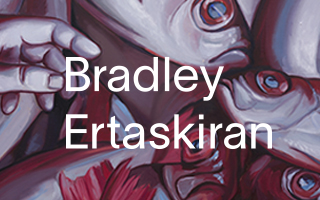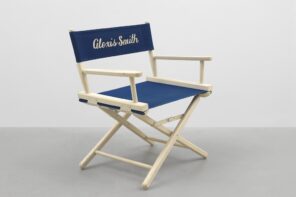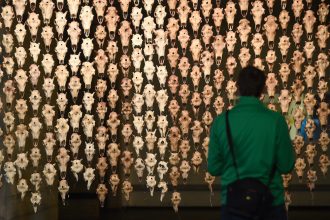It’s a media cliché that more has changed in the last ten years in journalism than in the century before that. Yesterday’s big news thatARTnews and Art in America are merging is our gem-perfect art version of this story.
People were leafing through ARTnews (founded 1902) and Art in America (founded 1913) before radio was a thing. But the two may not have survived the age of the internet on their own.
The terms of the merger are tooth-achingly complex.Tthe real implications are unclear, and the statements put out by editors Lindsay Pollock (Art in America) and Sarah Douglas (ARTnews) – both colleagues whom I greatly respect – give the impression, by their lack of details, that this is unclear because it’s simply not clear in the first place.
It looks like the print ARTnews will now be dedicated to “themed issues,” whatever that means (I’m guessing it will be phased out). Art in America sticks around, but Peter Brant, the newsprint mogul who is selling it off, says the merged art-mag conglomerate will “focus on digital content and online news reporting across all platforms.” So it’s not likely to be the art-historically focused Art in America of old.
You can read this as just a local earthquake caused by the larger tectonic shifts of the publishing industry. But art publishing has its own peculiar dynamics. One of these is that a great, great many art titles are vanity projects, backed by a rich person for the same kinds of reasons that rich people like to buy art in the first place.
So what happens in the art mag world doesn’t just tell you about the ill health of print, but also about the changing values of particularly wealthy people. Both Art in America and ARTnews represent their own permutation of this pattern.
From the Art in America side, the detail of the story that sticks out at me is this: While Peter Brant is selling off his art magazines, including not justAiA but also the Magazine Antiques and Modern, he is specifically not selling off Interview, which remains under his private control, despite the fact that it is a money sink just like the rest.
Andy Warhol founded Interview and Brant is a famous lover of Warhol. So it is hard not to read this decision as a statement of the Warholian priority of values: the connection to celebrity and fashion is what is to be prized and shielded; the doughty old project of producing ideas about fine art needs to be rationalized.
Flipping the story around and telling it from the ARTnews side, you have a different story of the evolving values of the art industry. The former publisher of the magazine, Milton Esterow, was hardly a flashy guy, having made his name as “reporter and assistant to the cultural news director” at the New York Times before getting hold of ARTnews in 1972, when it was a languishing part of the Washington Post group.
Esterow ran ARTnews for four decades with a deliberate style and journalistic emphasis, before selling it last year to Sergey Skaterschikov, a character mainly known for Skates, a company that focuses on art market analysis. “I love it and have a great strategy for ARTnews, stay tuned,” Skaterschikov declared at the time.
For months, the word on the street has been that Skaterschikov was already been shopping around ARTnews. So, whatever that “great strategy” was, it did not involve any long-term vision. Basically, the whole looks now like an attempt to flip the art magazine property, much as people flip artworks.













